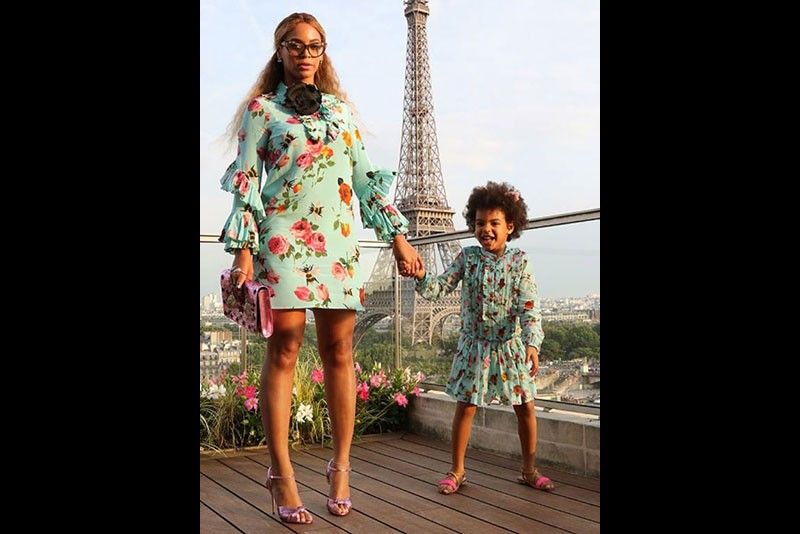The return of unisex, the rise of twinning

Are you cisgender or transgender? Maybe bigender? Or just gender nonconforming? Still gender questioning? Or safer to be neutrois, to not identify within the binary system of male and female? There are now about 71 options to choose from on Facebook including pangender and even two-spirit (like in the Zuni and other tribes) just so that almost everyone in every culture is covered. Even the term LGBT is insufficient now unless you add the Q (for queer or questioning but the former can be considered pejorative unless you’re among millennials). Yes, it’s complicated. Is it any wonder then, that fashion has gone genderless?
It used to be a lot simpler, of course, when it was just called unisex in the ‘60s. Society was just emerging from the rigid gender stereotyping of the ‘50s, an era when the term “gender” came into use to describe the social and cultural aspects of biological sex. The fact that the qualifying term had to be used actually meant that sex and gender did not always match in the conventional way. With gender stereotypes being questioned and dismantled and with the rise of the feminist and gay movements, it was inevitable for fashion designers to create a utopia of equality and androgyny.
In Paris, Andre Courreges, Pierre Cardin and Paco Rabanne utilized sleek silhouettes and graphic patterns with new, synthetic fabrics to create an egalitarian “Space Age” look that had no historical gender references. The unisex trend resulted in a movement that trickled down from adults to school-age children and even infants. From the mid ‘60s to mid ‘70s, girls and women began wearing pants and boys and men started strutting around like peacocks with bold colors and patterns.
Ultimately, however, unisex clothing “delivered uniformity with a masculine tilt,” according to professor and author Jo Paoletti. The avant-garde unisex fashion with boundary-defying designs modeled by androgynous-looking models didn’t really gain mass appeal. What sold was a less-threatening version worn by heterosexual couples in “his and hers” outfits promoted in cutesy advertising. Paoletti believes the unisex trend actually led to a “stylistic whiplash of more obviously gendered clothing” in the 1980s.
A more subtle reaction was the creation of a sexier androgyny that combined both masculine and feminine elements instead of avoiding gender markers altogether. Yves Saint Laurent with his 1966 le smoking tuxedo for women and his later mannish designs of gangster pinstripes and safari khaki, as well as Halston and his Ultrasuede shirt dress twist on a man’s shirt, are two of the more successful designers who caught the zeitgeist of modern, functional style favored by the jet set as well as young, working women. For men, womenswear designers like Pierre Cardin and Bill Blass started producing men’s lines like Nehru jackets and tunics that had a more feminine eastern slant as an alternative to the traditional gray flannel suit. Nehru collars, turtlenecks, scarves and ascots made the necktie disappear for some time.
The unisex era temporarily came to a halt in the mid ‘70s when Diane von Furstenberg made waves with her wrap dress that combined the functional with the feminine — versatile and sexy, it could go from morning to night, wooing women away from their beloved pantsuits. From the ‘90s onward, however, gender lines started blurring again with the appearance of grunge — ripped jeans with lumberjack flannel shirts, oversized sweaters or eco-friendly clothing made from recycled textiles, matched with Doc Marten combat boots or Birkenstocks. Kurt Cobain added ball gowns and housedresses to the mix and just kept his hair unkempt. It was a response to the flashy, shellacked aesthetic of the ‘80s, an anti-consumerist movement where the less you spent on clothes, the higher your coolness factor became. It was also an antithesis of the American macho man, a slouchy and loose look for both men and women.
Cobain was actually a catalyst for a radical, millennial idea of androgyny that is still evolving to this day. Just look at the off-the-cuff, cross-dressing collections of Hedi Slimane for Saint Laurent and Alessandro Michele for Gucci. There was even a unisex haute couture collection by Rad Hourani. Labels like The Kooples encourage swapping of clothes between men and women. Personnel of New York has lines divided into Men, Women and Everyone.
In Japan, pop stars like Toman and Ryucheru are part of a growing group of “genderless danshi (young men) who are developing a public identity out of a new androgynous style, wearing makeup, feminine hairstyles and clothes that evoke the fashion of a preadolescent girl. Toman insists that “the concept of gender isn’t really necessary. People should be able to choose a style that suits them.”
Jennifer Robertson of the University of Michigan observes: “They are trying to increase the scope of what someone with male anatomy can wear.” Cross-dressing is actually in their culture, from the classic Kabuki and Noh theater where men take both male and female roles to the more contemporary Takarazuka cabaret shows where women play both genders. A unisex male image is also influenced by anime Japanese cartoon characters and effete boy band members. But unlike in the west where cross-dressing usually has sexual undertones, in Japan there is somehow a separation between dressing and sexuality. It’s just a way of expressing oneself, a way to challenge the social order. In the older generation, “women were jealous of men because they could work and do whatever they wanted,” says Junko Mitsuhashi, a lecturer on gender studies at Meiji University. “But in the younger generation, men are jealous of women because they can express themselves in fashion, they can change their appearance.”
In South Korea, unisex is manifested in the Keo-Peul-Look or lookalike couples fashion. With public displays of affection frowned upon, it was practically a necessity for couples to share androgynous clothing. Outfits are closely coordinated though, with die-hards even matching all the way down to their underwear.
Such a show of devotion to one another can also be seen in the Twinning trend of wearing identical wardrobes. It was actually the buzz in the 2017 New York Fashion Week with models at Tommy Hilfiger coming out in pairs wearing the same nautical outfits and twin models at Monse marching down the runway wearing identical off-the-shoulder shirtdresses and pinstriped skirts. In Rebecca Minkoff’s show finale, model Alanna Arrington strolled down with the designer wearing matching leather jackets that had complementary graphic appliques. This trend in fashion takes its cue from street-style pairs who have caught the eye of photographers and social media. Some are not necessarily identical but just coordinated in terms of colors, textures, prints, themes or in the feel of the fashion look. Others, of course, have no qualms about being blatant about it, like Will Ferrell and his wife Kirsten Wiig who were spotted in Tribeca wearing their identical navy hoodies with big white letters emblazoned on their chest spelling “WILLSTEN,” the combination of their first names. What could be Twinnier or Unisexier than that?
But will these trends last? “Our clients have been there, done that,” said Judson Harmon, the owner of the four-year-old shop Odd which made its name in the Lower East Side of New York selling non-gender-specific clothes with a half-male, half-female mannequin greeting visitors at its storefront. The signature mannequin is being taken down, however. “We’re not abandoning the versatility of unisex. We’re just not targeting it.”
* * *
Follow the authors on Facebook - Ricky Toledo Chito Vijandre; Instagram @ rickytchitov and Twitter @RickyToledo23 ART DE VIVRE Ricky Toledo & Chito Vijandre















